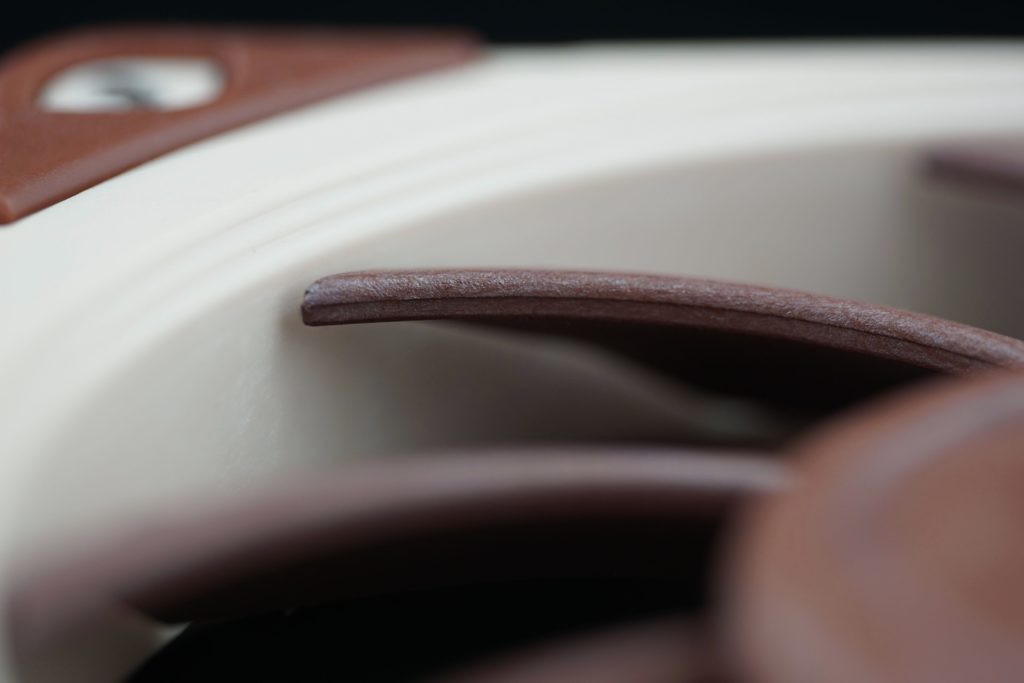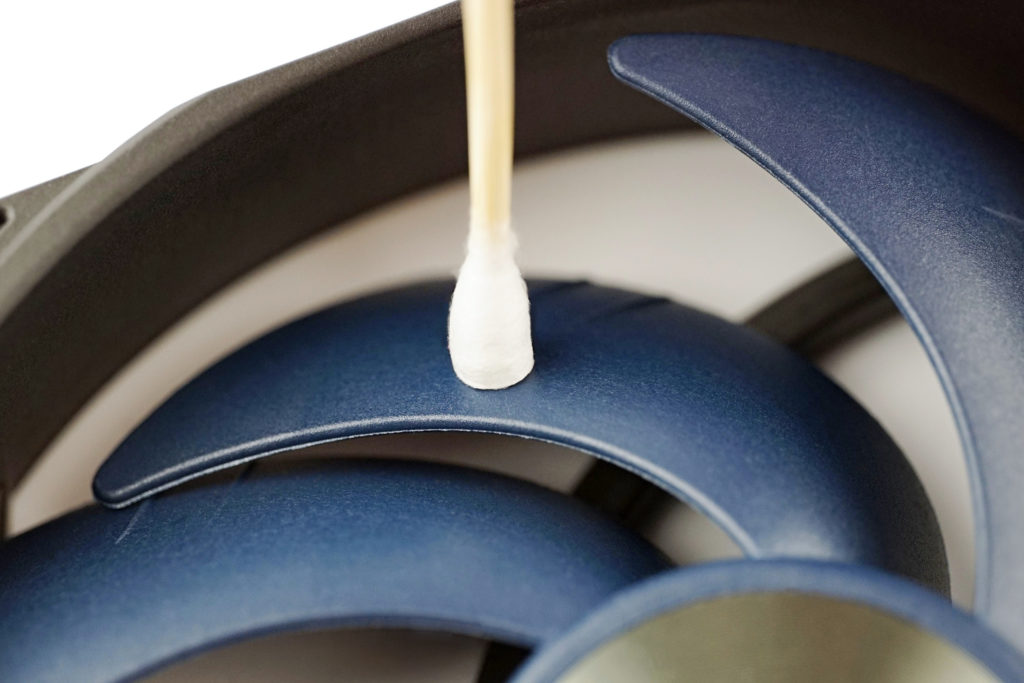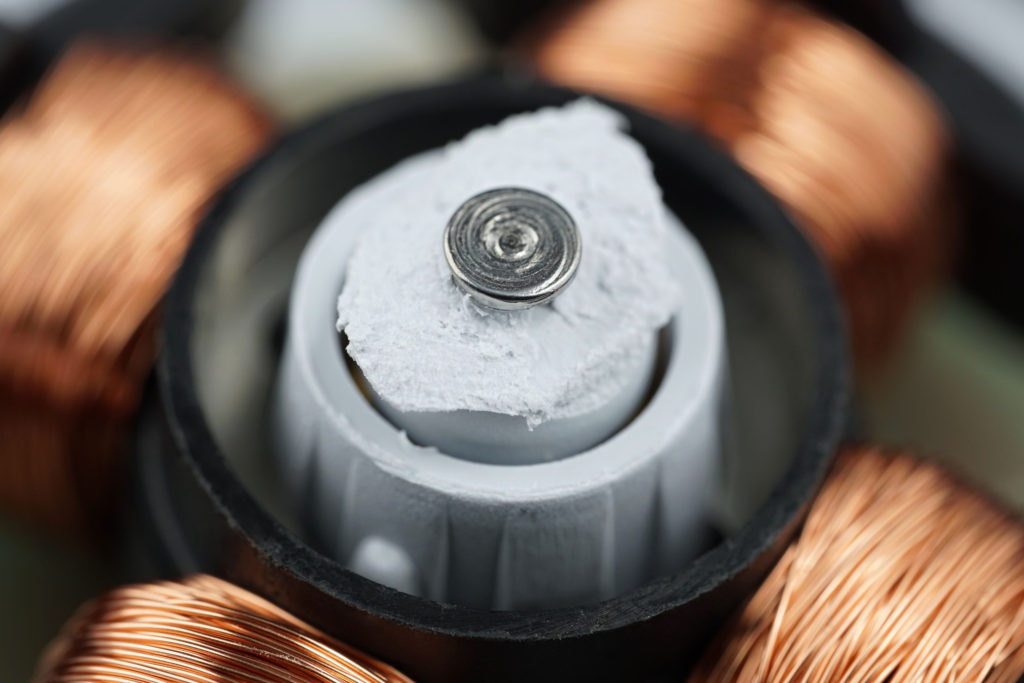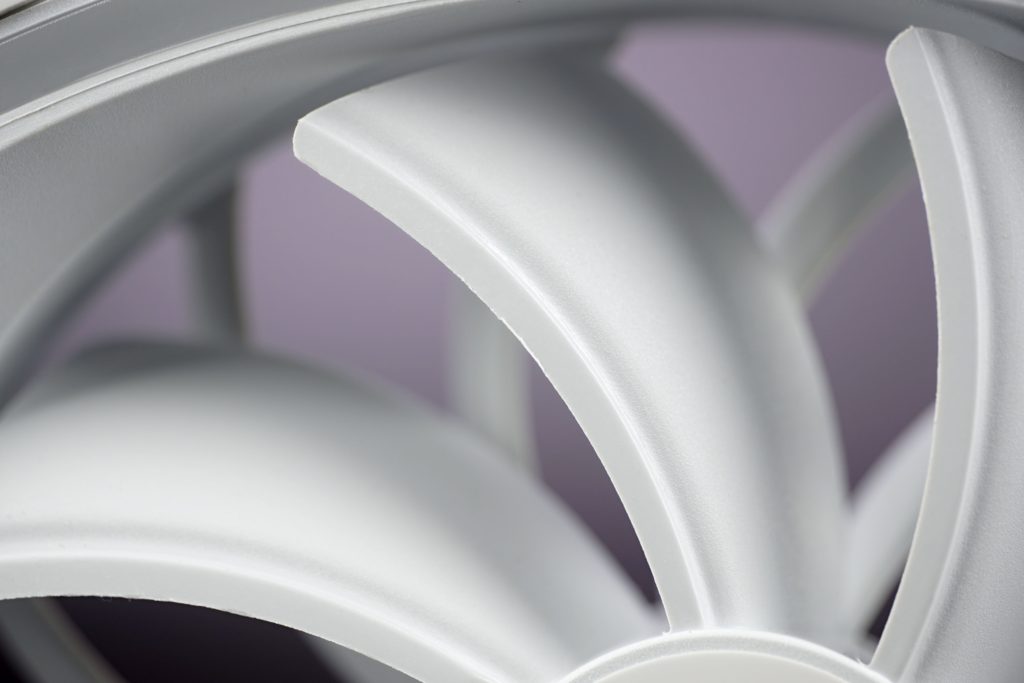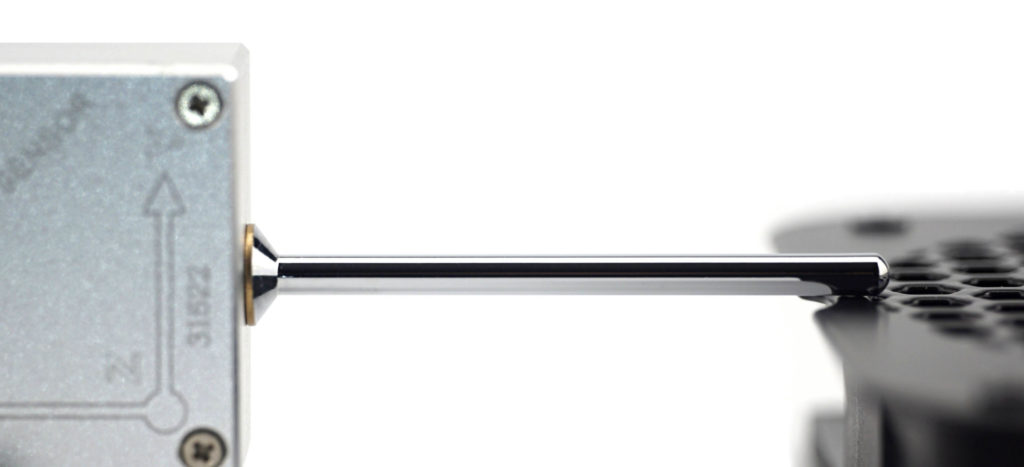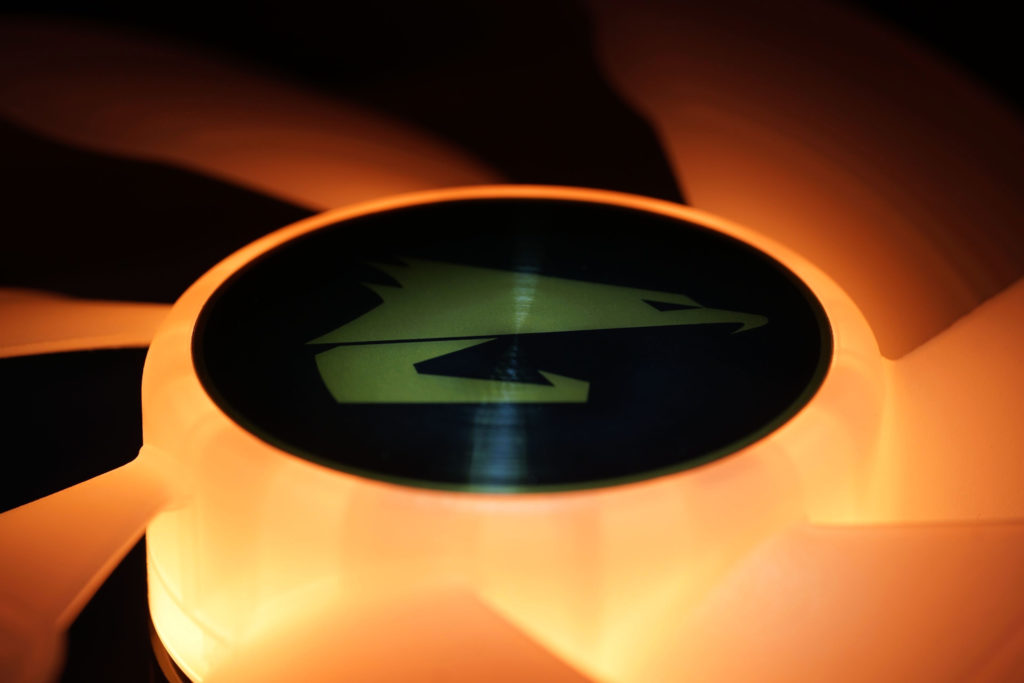Fan vibration. Why do they occur?
We pay close attention to fan vibration in our tests, as it clearly indicates the mechanical qualities of the design. However, it is always good to have an idea why some fans vibrate more, others less, some not at all. And we will deal with this in more detail in this article, which is based on our own experience, but also on notes from fan developers. Can a cheap fan reach high speeds without vibration?
The reason why vibrations significantly reduce the qualitative characteristics of fans is clear – they increase the noise level. Whether at their own level or at the level of a radiator or a case with which they are in contact. In worse cases, it is a combination of both, where both the fan and the case design get into various resonant frequencies and the result can be very unpleasant. Especially if you have more than one of these “unsuitable” fans in your computer. Then the sound of the whole system is excessively disturbing and naturally the considerations like “what’s wrong, how can it be improved” and so on start. First of all, however, it is important to locate the source of the vibrations and maybe even anticipate a bit what to avoid in what situations, so that in the end, when the build is finished, you will be satisfied with its sound profile.
There are a number of things that stimulate, amplify or suppress fan vibration, and what you see in the result graphs is often a combination of several adverse factors. We will discuss these in the following paragraphs.
Blades too flexible
High blade elasticity with high thermal expansion are by far the largest source of vibration in modern fans. And it’s a hotter topic than in the past. Today’s fans come with aerodynamically very efficient geometries, but often lack stiffness due to limited manufacturing costs. This can be seen well with fans that have very long blades in proportion to their width. While such a design is very efficient in terms of achieving the highest possible airflow per unit of speed, the problem is one of increasing flexibility. This has to be counteracted in some way and this is done in two ways. One more expensive and one cheaper.
The more expensive method is to use a stronger material with low thermal expansion, typically LCP, as is also the case with the popular Noctua NF-A12x25 PWM, but also many others (Lian Li UNI Fan P28, Phanteks T30 či MSI MEG Silent Gale P12). This is also why, due to the use of expensive material to make the rotor, these fans don’t have an impressive price/cooling performance ratio.
A good option to keep the cost low while eliminating critical vibration is to deploy a rotor hoop. This, among other things, stabilizes the tips of the blades and although it is not a no-compromise solution, for cheap fans we can talk about a great innovation, which, by the way, also increases the airflow, which we will discuss later in a separate article. For now, the important information is that in Arctic fans, for example, this hoop dramatically reduced the vibration of the entire fan – compare the results of the P12 PWM PST (hoopless design) with the results of the P12 PWM PST A-RGB (with hoop). Because of this, the resonant frequencies, which resulted in very annoying tonal peaks, were significantly reduced. Instead of a hoop, one can work to some extent with a greater thickness of less stiff material or a shape that can also minimize vibration.
And when vibrations on the blades do occur, the significant suppression of tonal peaks at the lower (rumbling) frequencies of the sound is obviously also due to the choice of a softer material. This is shown by the Akasa Alucia SC12 fan with a rotor with lower hardness. At high speeds, the vibrations of this fan are already high, but in combination with the nature of the material, they quite successfully bypass frequencies (oscillations) that would be negatively reflected in the sound. There are some peaks at the lower frequencies of sound with this fan, but you won’t find many geometrically similar fans without a rotor hoop that have lower peaks. Higher vibration may not automatically correlate to a more rumbling sound, similar to how you can’t make a rubber plate sound the same as a sheet metal one with the same vibration.
Worse rotor centering
But what about fans that have short, wide, sturdy blades even when using a less rigid composite (typically PBT without fiberglass) and also vibrate significantly, such as the SilentiumPC Sigma Pro 120 PWM?In this case, there may be more reasons, but one of the key things is the eccentric axis of the rotor. That is, it may not be exactly on center or it may not be perfectly straight. These things, of course, can be somewhat coincidental with cheaper fans, since along with lower manufacturing costs come cheaper manufacturing processes with higher tolerances.
Inaccurate injection mould
And speaking of manufacturing tolerances, these naturally also apply to the injection moulds in which the fans are produced. With cheaper moulds, little attention is paid (in order to make production profitable even at the low prices of the fans themselves) to precision, so that rotors with small defects in the form of burrs come out of the moulds. There may be some talk of poor rotor balance with these to some extent, but such Enermax SquA RGB, which among other things is characterised by poorer build quality, shows that this (super-precise injection moulding) may be more of a cosmetic issue than a technical one. Sure, it can vary from geometry to geometry, and rotor balancing is about things other than tiny indentations on the edges of the blades.
Although rotor imbalance is often discussed in relation to vibrations, which fan in particular is affected by such shortcomings? Maybe the extremely vibrating Gentle Typhoon D1225C? Hard to say anything for sure, this fan is going to be unstable on multiple levels. Higher weight rotors tend to include balancing elements inside the hub. Sometimes…
Motor vibration…
It is one thing to balance the rotor and another to balance the motor. Some of the vibration that gets to the frame, and consequently to what the fan is in contact with, will also be caused by the vibration of the motor itself. To what extent this may be the case with current fan motor manufacturing technologies, we don’t know. We assume that it’s very little, but we would be happy to be proven wrong by someone who works in the industry.
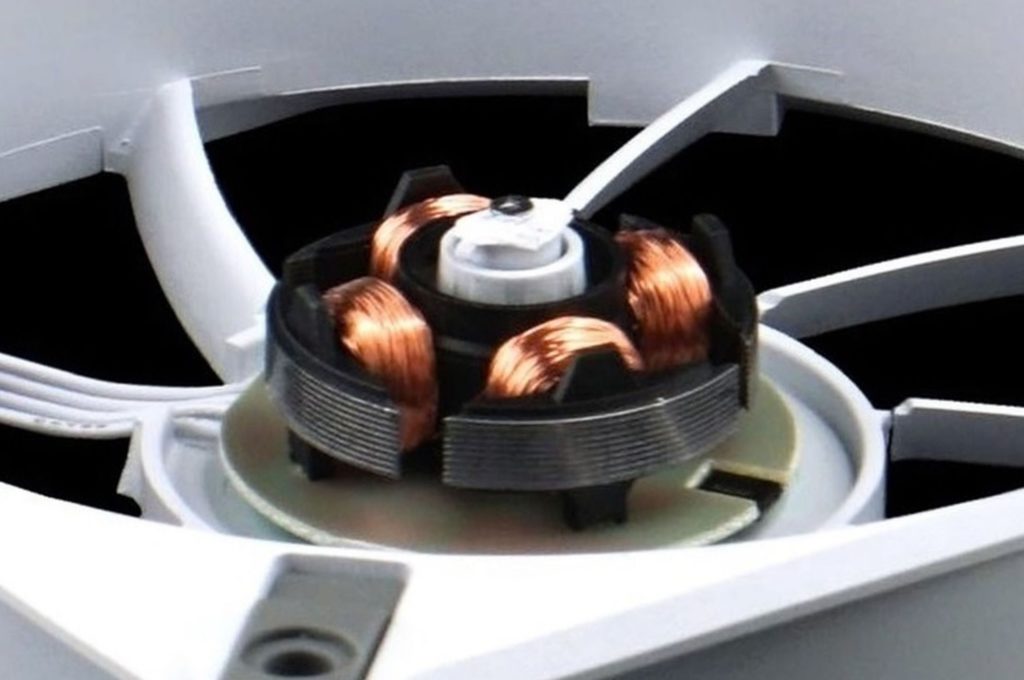
… with choppier movement between the stator poles
The vibration is theoretically increased by the “jumps” the rotor makes at the stator poles, which the more there are, the smoother the motion. Again, however, this is not a major issue, as even conventional four-coil fans achieve excellent results in terms of low vibration. With six or even twelve (in the Super Flower Megacool fan), the rotation is smoother, but more than the lower vibration, such designs have the effect of lower operating power draw, as less force is needed to keep the fan turning. And among the fans benefiting from this are the Akasa OTTO SF12 or BeQuiet Silent Wings 3, which have 6-pole motors and at the same time at equal speed compared to 4-pole designs they achieve lower power draw.
Excessive bearing friction
Bearing friction also has a certain effect on vibration. Of course, the lower the better. Not only in terms of vibration, but also in terms of operating power draw. Compared to competing solutions, the Aorus 120/140 ARGB fans also have it lower at the same speed. Gigabyte talks about using a lubricant that provides extra low friction. And there’s obviously something to that.
Very high turbulence
Another accomplice of fan vibration is the enormously intense airflow at high speeds. However, the increasing vibration towards maximum speed is due to a number of factors, and the fact that the fan is approaching the limits of what it is designed to do. This means that blade undulations start to get a bit out of control, and when it all adds up, it’s sometimes better to reach for two slower fans rather than opt for one high-speed fan.
English translation and edit by Jozef Dudáš







